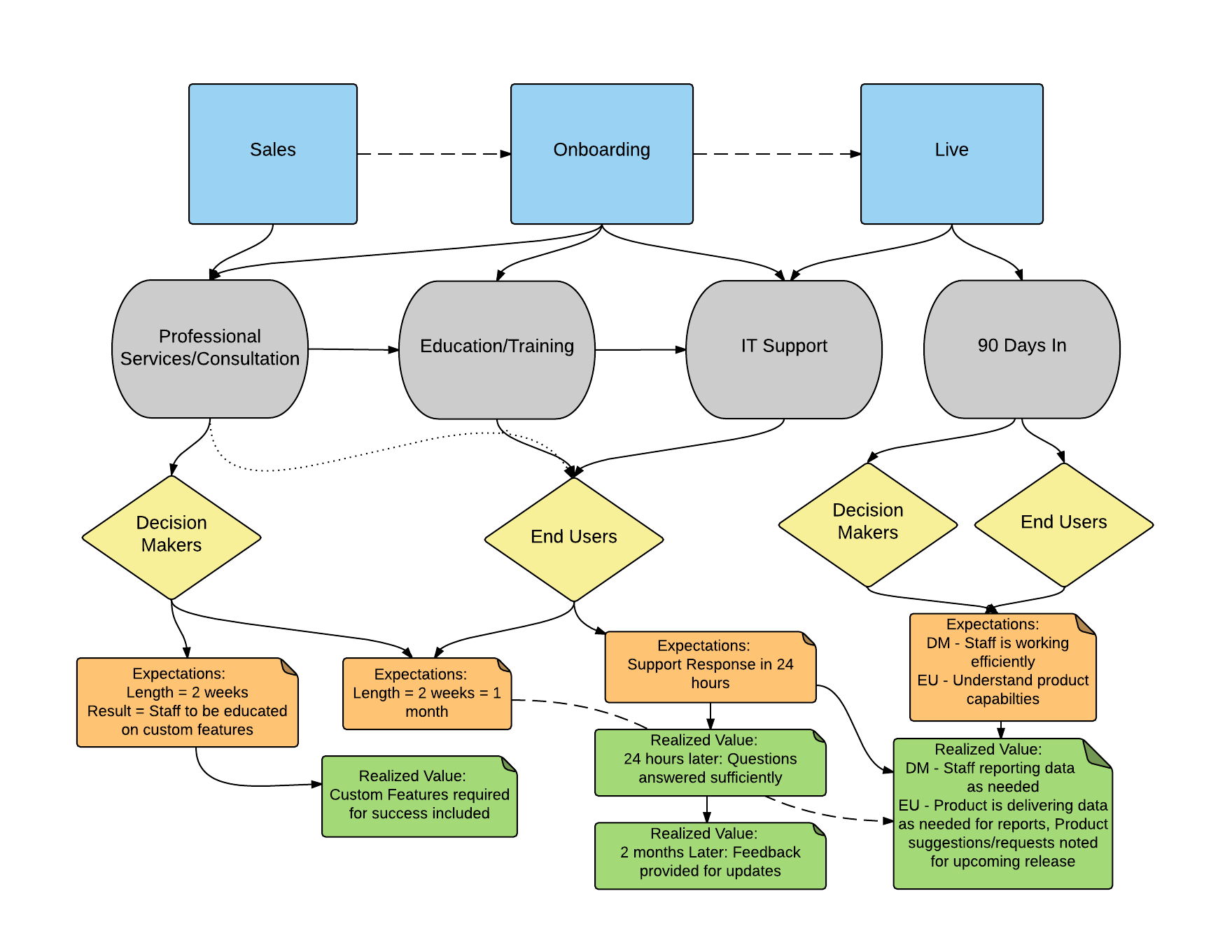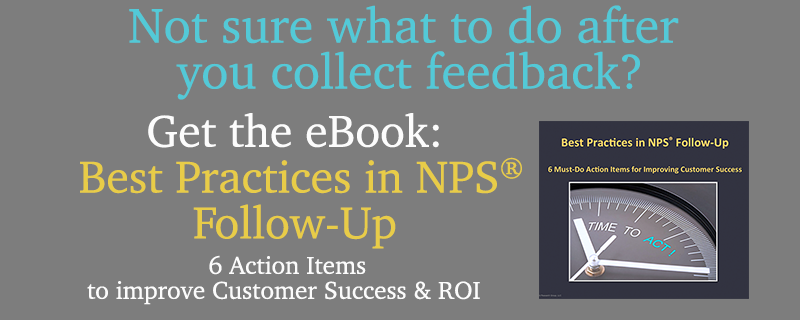Search Waypoint Resources
Customer Journey Maps in B2B

Are you doing it wrong?

The last couple of weeks, my posts on LinkedIn have focused on renewals, NPS and feedback in a business-to-business setting. This week I want to shift to another popular B2C oriented CX practice that needs to be augmented a bit for true impact in B2B.
Customer Journey Mapping has become a popular tool in the CX space and it’s a great starting point for understanding how your customers flow through the different touchpoints of your company. The important thing to note is to complete this exercise from the customer’s perspective, not the company’s, and validate it with customers to be sure it’s correct.
While this can be a great starting off point for a B2B company to examine the way a customer interacts with the different areas of the business, it’s only the beginning for improving the customer experience. And to make it truly impactful in a B2B organization, there are some considerations that need to be made.
1) The buying process is so much more complicated in a B2B setting since there are many people weighing in on a purchase decision; sales/evaluation and implementation cycles are complex, and there is hardly ever just one person that makes up a “customer.” Plus, the people who get involved have different roles and responsibilities, making the “experience” an amalgamation of many different processes.
2) The goal of a B2B buyer is different from that of a traditional consumer. They are purchasing your product/service in order to provide a return on a business investment – and often stake their reputation on these decisions.
3) B2C companies rarely develop direct relationships between an employee and a customer – have you ever had a dedicated Account Manager for a product you bought for yourself? Someone you have a direct email or phone number for that you can call for help? Probably not.
Long-term Value and ROI are critical and complex in B2B, and this doesn’t happen from a single interaction or “experience” with any individual touchpoint such as product, training, support etc… Value and ROI come from the sum of these interactions and their ability to meet expectations and requirements.
Add in these important aspects to your B2B journey map, noting how hand-offs can affect different stages:
- Where expectations are set and delivered
- How the relationship is affected at each touchpoint
- How/Where value is realized within the journey.
Building in these evaluation steps to the journey map will greatly help B2B companies like SaaS organizations to improve customer success and generate ROI from the improvements.
Let’s look at an example, such as Onboarding – a very important step for B2B.
Let’s say the major steps for onboarding are:
- Professional Services/Consultation
- Training/Education
- IT Support
Clearly, there is important communication happening throughout these steps, which may occur with different groups of customers, and may not be linear. For example, the Professional Services/Consultation portions may be with the Decision Makers while the Training/Education and IT Support are with End Users. There may be other groups of people involved (Influencers, Data Consumers) depending on the customer, but this example with stick to the basics.
- Manage expectations up front. During the Professional Services/Consultation phase, expectations have already been set in a previous phase, likely Sales. Therefore the internal passing of information from one team to another is critical. There are certain outcomes that those Decision Makers expect, and this touchpoint’s success hinges on the ability to deliver on those to deliver value. Are there specific product capabilities needed to make this customer successful? Making those a priority in the Education phase should be noted.
- Set up the End Users for success with proper Education/Training and Deliver efficient and effective communication with any customizations with Professional Services/IT Support
- Deliver on those promises – If an expectation is set with one group, be sure to back it up or communicate why it may be delayed. Otherwise, the relationship will certainly become strained and customer retention will be tough.
Mark these points on your map. Take note of how expectations are set within these touchpoints, who they are with and how the value is communicated. Also make note of when the value is realized for the person. This may happen way later in the map, like 90 days after Go Live.
Here is an example illustration:
Communicating with the customer to understand how they felt about the process is important. This is another point where online feedback can help collect data efficiently. Ask your customer questions how they felt the Onboarding process set them up to get the most out of your offering, and be sure to dive into understanding how and where expectations were set, and how they were subsequently met.
This kind of template (below) may help your team in the evaluation process. Start by looking at a single Lifecycle Stage and use the feedback to color code customer satisfaction for each component. Based on their feedback, list what the customer experienced, mark the expectation and where it came from, and potential ways to address or improve the stage for future new customers.
The journey map exercise is never really over because the process may change, different use cases may alter their course, and improvements to your operations may add or take away some steps. The key for B2B firms is to keep communicating with customers to better understand how different people within an account interact with your company and how you can keep innovating, improving each step in the journey to deliver better ROI for them and improve the customer’s lifetime value for you.
What do you think? Would this tool be helpful for you? If you’d like a copy of the template, feel free to reach out and I’ll send a workable version over. sabrinab@waypointgroup.org.


